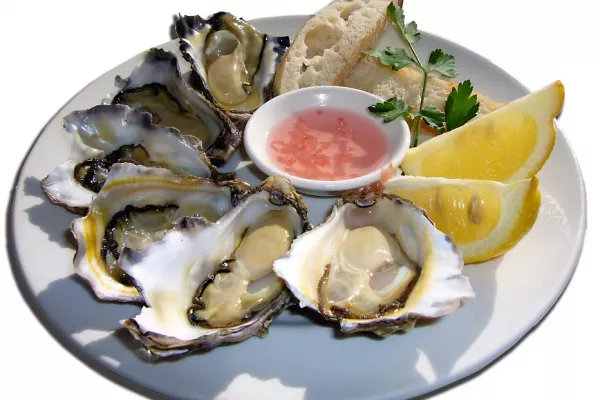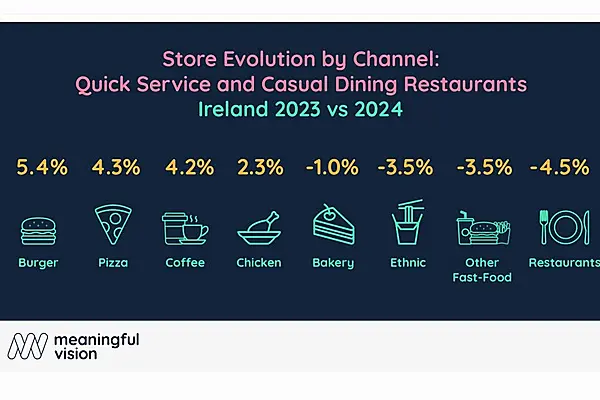But that doesn’t mean they want to be ripped off.
Splurge by all means, says Josh Capon, the chef and co-owner of Bowery Meat Company and Lure Fish Bar, just know what to avoid if you don’t want to be slogged with a huge markup or inferior produce. Here’s a list of things he would never order from a restaurant menu.
Oysters that are not freshly shucked
When you order oysters, make sure they are shucking them to order. They should be displayed on ice, cold and juicy. And they should taste like you’re eating the sea. If you get a half dozen oysters at $3 or $4 a pop and they come out looking a little dry and not exactly plump and sexy? I wouldn’t eat them.
Cheaper oysters aren’t necessarily bad oysters though. A lot of raw bars offer a dollar oyster happy hour to get people in the door, and they’re usually local to the region. Oftentimes, the restaurant breaks even when they sell them—but that’s to your benefit. Just make sure they were opened after you ordered them, and that they look good.
Truffles you can’t see
Plenty of truffle oils and butters aren’t made from the real stuff. Some even use chemicals to simulate their distinctive flavor. I won’t name names, but I’ve worked in places where they use portobello gills—the bottom of a portobello mushroom—that look like truffle shavings when they are dried out.
Truffles are expensive because they’re not easy to come by. A dish spiked with four to five grams of white truffle can cost anywhere between $44 to $175, depending on the restaurant, market supply and time of year. I’m not saying they’re not worth it, but if I’m going to pay for them, I want to see them shaved tableside. You should see the truffles, smell the truffles—basically, you want to enjoy the show. You don’t want to be told, “trust me, they’re in there.”
Mediocre steak frites
You get what you pay for when you buy a good piece of meat. With something like steak frites, or what’s called the ‘bar steak’, restaurants don’t always specify the cut of meat. I see some chains selling steak dinners for $11.99 with a skewer of shrimp and I don’t know how they do it. It’s not the same meat I’m serving at Bowery Meat Company, I’ll tell you that much.
There are different meat tenderizers that cooks use, and certain tools that will pull at the muscles and tendons to make something a lot more tender than it is. To me, a steak isn’t something you eat every day. So if I’m going out for a steak, I go for a prime, possibly dry-aged steak that I know I’m really going to enjoy and not a questionable cut.
A $76 Dover sole
A fish like Dover sole—often sold as Sole Meunière—is a high ticket item. Since real Dover sole is flown in from Europe, it’s an expensive piece of fish to buy, which means it’s going to expensive on the menu. (New York’s 21 Club sells it with a lemon beurre blanc for $76 a pop).
It’s a rich, buttery fish. I’m not saying it shouldn’t cost that much. But at the same time, I can get you a beautiful locally caught lemon sole for a lot less. If I served up a Dover sole and a lemon sole and covered them both in a brown butter sauce, you probably could not even tell the difference.
Dishes ‘for the table’
Let’s say you’re a group of six people out to dinner, and the captain comes over and says, “The scampi is so good. Why don’t we order this for the table?” There’s nothing wrong with saying to him, “You know what? That’s great, but can we do those scampi for five people?” This strategy for ordering less than your group size goes for anything from bread to sides to a raw bar to steak, because there’s always someone who won’t eat as much as the others. You’ll save a few bucks, and I promise you there will still be plenty of food.
Mystery maki rolls
At my restaurant Lure, all of the chopped fish in our spicy tuna and yellowtail scallion rolls come from fresh fish delivered to us every day. When you cut a piece of tuna and save the best parts for sushi and sashimi pieces, there’s a lot of trimmings you can use in maki rolls so nothing goes to waste.
But I’ve seen frozen products out there—bags of chopped-up tuna that you don’t know where it came from, when it was chopped up or when it was frozen. That’s what you don’t want in your spicy tuna maki. Sometimes the spice hides the questionable flavor of the fish. If I have any questions about the freshness of the fish at a place, there’s no way I’m ordering a sushi roll there.
Guilt-ordered wine
If you’re having an expensive dinner at a restaurant, you probably feel like you need to have an equally pricey wine. It’s perfectly fine to not want to spend big bucks—say more than $75—on a bottle. Tell the sommelier what kind of wine you’re looking for and what your price point is. He or she should appreciate your honesty, and treat you with the same amount of respect as somebody buying a $500 bottle of red. If they don’t, you just learned something about that restaurant.
Article by Bloomberg, edited by Hospitality Ireland









